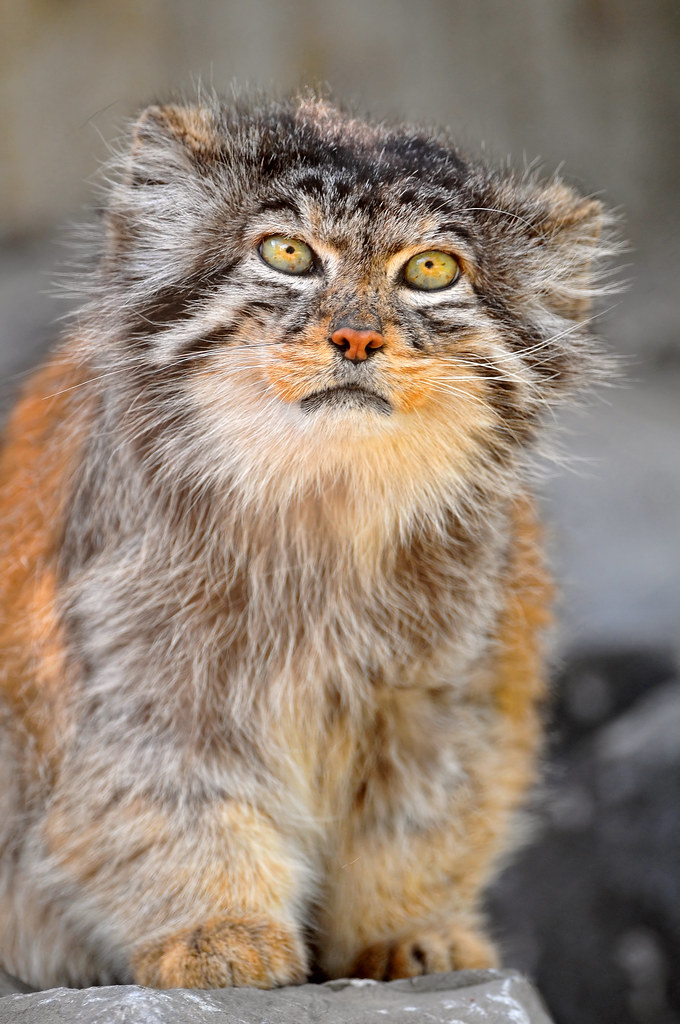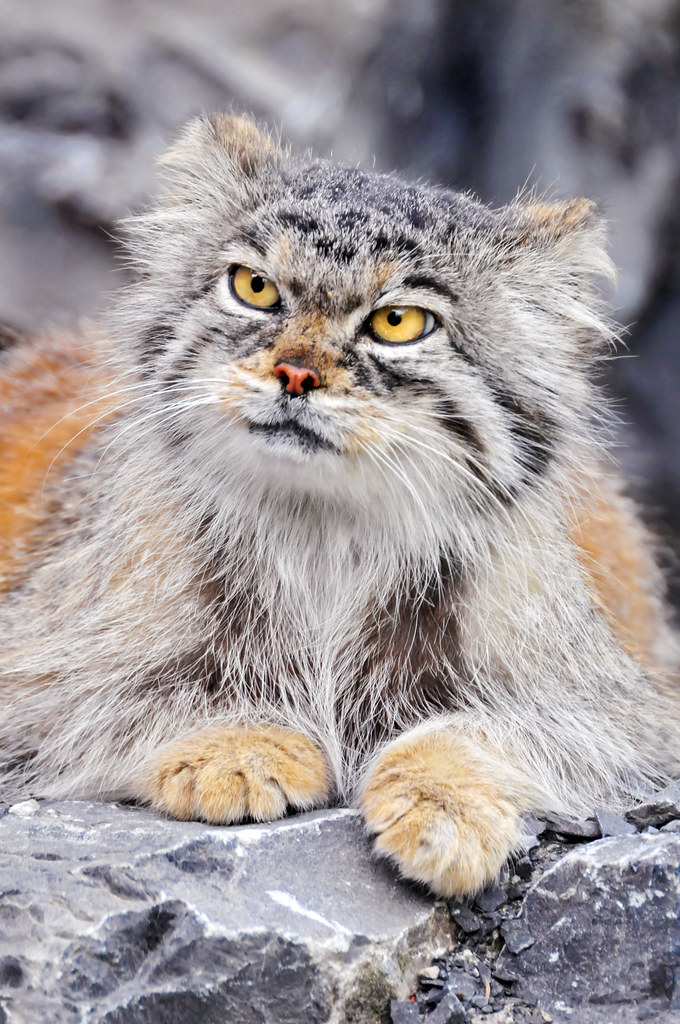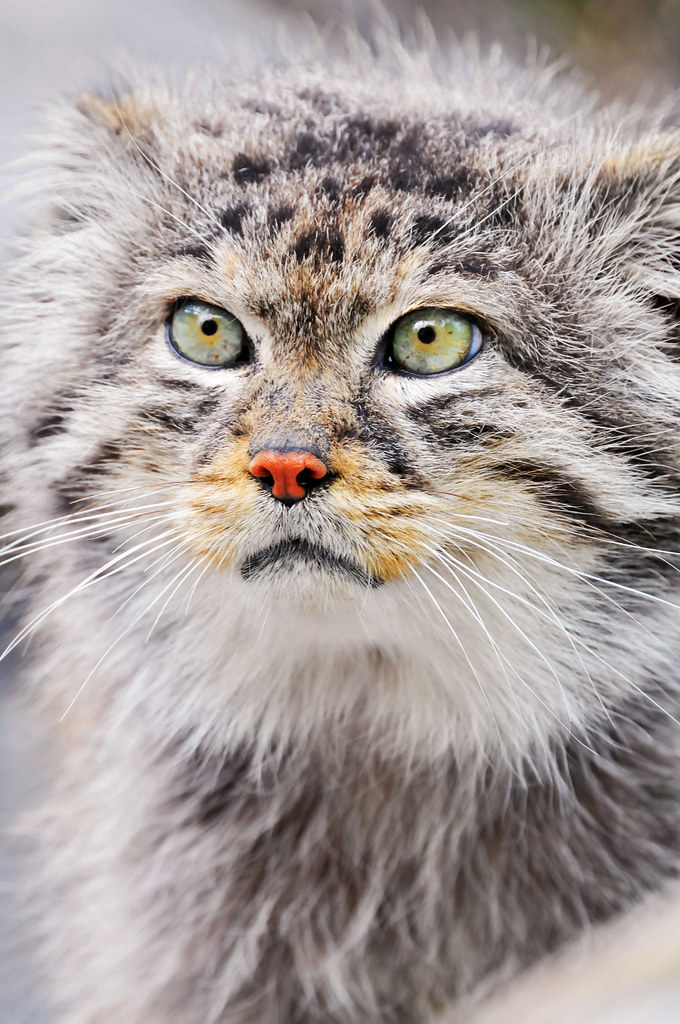
The main reason for its survival throughout the ages has been its isolation. In the wild it lives on the Asian steppes at substantial heights – up to 13,000 feet. Based in India, Pakistan, western China and Mongolia as well as Afghanistan and Turkemistan, it has even been discovered recently in the wilds of the Sayan region of Siberia. In these places it prefers rocky areas, semidesert and barren hillsides. In other words places where we are less likely to live – but even having said that you will no doubt be able to hazard a guess which species is the Manul’s greatest enemy.
Take a close look at the eyes of the Manul. Do you see a difference between it and the domestic cat? That’s right, the pupils of the Manul are round, not slit-like. Proportionally too, the legs are smaller than cats we know and they can’t run anywhere near as quickly. As for the ears, well, when you actually can catch sight of them they are very low and much further apart than you would see in a domestic cat.


It is thought that the cat hunts mostly at dawn and dusk where it will feed on small rodents and birds. Ambush and stalking are their favorite methods of conducting a hunt and although they tend to shelter in abandoned burrows in the day they have been seen basking in the sun. In other words, behaviorally they are much like the domesticated moggy that we know and love.
The Manul is a solitary creature and individuals do not tend to meet purposefully when it is outside the breeding season and will avoid the company of others of its kind where possible. When it is threatened it raises and quivers the upper lip, Elvis like, revealing a large canine tooth.
When breeding does happen the male has to get in quickly as oestrus usually only lasts just under two days. It usually births up to six kittens, very rarely a single one, and it is believed that the size of its litters reflect the high rate of mortality the infant cats can expect. Yet they are expected to be able to hunt at sixteen weeks and are very much on their own and independent by six months. Although their life expectancy in the wild is unknown in captivity they have lived to over eleven years.
Don’t rush to your local pet store, however. The Manul does not domesticate and even if it did they are incredibly hard to breed in captivity with many kittens dying. This is thought to be because in the wild, due to its isolation, the cat’s immune system did not have a need to develop and so when they come in contact with us and other species, this under-developed immune system lets them down.

Sphere: Related Content
![Validate my Atom 1.0 feed [Valid Atom 1.0]](valid-atom.png)









































































Nenhum comentário:
Postar um comentário